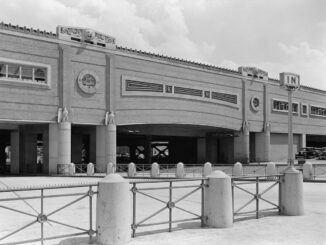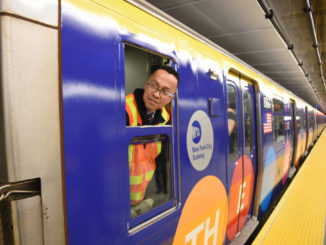NEW YORK — Mayor Michael R. Bloomberg recently reactivated the Staten Island Railroad, an eight-mile railway that will connect Staten Island to the national rail freight network.
The $75 million project, a joint venture between New York City Economic Development Corporation (NYCEDC) and the Port Authority of New York and New Jersey (PANYNJ), is a key component of the City’s historic Solid Waste Management Plan. The reactivation created more than 780 construction jobs and will result in 330 new permanent jobs.
The reactivation will be a tremendous boost to the Staten Island economy by providing much needed direct rail access to the New York Container Terminal at Howland Hook, several of Staten Island’s largest businesses, including Pratt Industries (Visy Paper) and VanBro Corporation, and other industrial businesses on the Travis Branch Line, which runs along Staten Island’s western shore, officials contend.
By connecting to the Staten Island Transfer Station, the Railroad will allow Staten Island’s solid waste to be transported by train rather than truck, a defining feature of the Solid Waste Management Plan (SWMP). In total, the project will reduce truck traffic on Staten Island by more than 100,000 trips per year. The total economic impact of the reactivation on New York City’s economy will be more than $200 million per year by 2010.
“The reactivation of the Staten Island Railroad creates tremendous economic development opportunities while providing a means to transport Staten Island’s waste by rail instead of truck, a hallmark of our Solid Waste Management Plan,” Bloomberg said. “In addition to providing a connection from the Staten Island Transfer Station to the national rail grid, the railroad will also serve our largest container terminal as well as several key Staten Island businesses, resulting in 100,000 fewer truck trips on Staten Island each year. By investing in this important infrastructure we have set the stage for tremendous economic growth and have done so in a way that will help the environment and improve the long-term sustainability of New York City.”
Construction on the Staten Island Railroad’s reactivation began in late 2004 after it had been closed since 1991. In March 2007, NYCEDC entered into an agreement with CSX Transportation, Norfolk Southern Railway and the Consolidated Rail Corporation to provide rail services to Staten Island. Trains began running on April 2, hauling waste from the Staten Island Transfer Station, and it will be used for shipping freight from the New York Container Terminal and other industrial businesses starting in the coming months.
Since it reopened in 1996, the New York Container Terminal – formally known as the Howland Hook Container Terminal – has been the fastest growing marine terminal in New York Harbor.
The Staten Island Railroad reactivation was a joint effort by NYCEDC and the Port Authority, each contributing about half of the $75 million needed for the renovation of the eight mile rail line and modernization of the Arthur Kill Lift Bridge. The lift bridge, the longest moveable lift bridge in the world, connects the railroad to the Chemical Coastline Connector in New Jersey.
Separate from the $75 million City-Port Authority investment, the Port Authority provided $56 million for the construction of the bridge viaduct connecting the railroad to the national freight network in New Jersey, and it has invested $26 million in the Express Rail ship-to-rail facility at the New York Container Terminal enabling the terminal to ship cargo to western markets by rail.




